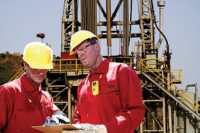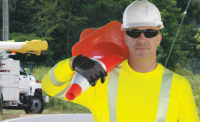Imagine you’re an experienced electrician. You’ve been working on energized power lines for years — so long, in fact, that you could practically do it in your sleep. And never once have you encountered an electric arc flash. So, over time, you start to get more lax about your arc-rated (AR), flame-resistant (FR) clothing. Maybe you decide to go against protocol and push up your sleeves, leaving your skin exposed. Or worse, maybe you don’t even bother with AR workwear at all.
Normalization of deviance — in other words, the tendency for behaviors that were once considered unacceptable to become commonplace and seemingly permissible — is common across a variety of industries and work situations. In the best-case scenario, normalization of deviance goes against recommended work practices, but when it comes to safety, this common human tendency can have devastating consequences.
Understanding the problem
Accidents will happen, and injuries will occur, if basic safety precautions aren’t taken and proper PPE isn’t worn. This is particularly true if these habits become a culture in your work environment. Newer workers may see veterans skip the use of PPE and think they can do the same.
According to the Bureau of Labor Statistics, more than 16,000 industrial injuries due to thermal burns were reported for the year 2013. And from 2000 to 2013, nearly 2,300 workers died as a result of injuries sustained in an industrial fire or explosion. So if skipping FR clothing becomes commonplace as a result of normalization of deviance, it's only a matter of time before someone gets hurt.
Normalization of deviance is a product of complacency. As tasks become common and repetitive, workers often begin to ignore basic safety protocols and PPE. They may recognize a hazard exists, but because they’ve performed the task many times without an accident and putting on the proper PPE is either time-consuming or inconvenient, it is tempting for them not to bother.
And when there are multiple hazards involved, the situation becomes even more complicated. For instance, workers may wear clothing that offers protection from a fire hazard, but then not take the extra step to add PPE for chemical splash. If multiple garments are necessary for protection, it is all too easy to skip or forget a layer.
A costly issue
In addition to the potential for a life-altering injury or even death, worker complacency can lead to serious financial consequences, particularly when it comes to injuries from thermal or chemical burns. A single burn injury can cost a company millions of dollars in hospital fees, OSHA fines, increased insurance premiums, legal costs and lost productivity.
For example, according to the American Burn Association, the average duration of a hospital stay for a survivor with 40-60 percent body burn is 54 days, and the average cost of the stay is $780,000. OSHA fines can be equally costly, if not more so. In 2012, two employees were severely burned when an industrial filter cartridge ignited, causing an explosion. Their employer received two OSHA PPE-related citations, and the proposed fines amounted to $325,710. In another incident in 2005, 13 employees were injured in an explosion and seven were hospitalized and treated for burns. In this case, penalties amounted to $21,156,500. And in terms of legal costs, a study conducted by the Vanderbilt University Law School found that the average settlement or award in burn injury cases equaled $827,506.
Normalization of deviance is a serious problem — but fortunately, strategic PPE selection can go a long way toward combatting it.
PPE solutions
There are two factors in PPE selection that can significantly help overcome normalization of deviance: addressing multiple hazards with a single garment and improving comfort.
The more layers of clothing workers have to put on for proper protection, the less likely they are to have the right PPE when they need it. Sometimes this is due to complacency, but it can also be due to innocent confusion or forgetfulness. Regardless of the cause, a simple solution is to look for workwear that combines protection against multiple hazards into a single PPE product.
Even if workers have access to a convenient garment that addresses multiple hazards, if it is uncomfortable, they still may not wear it correctly. To help increase the likelihood that protective apparel is worn consistently and correctly, look for options that fit well, offer good breathability, wick moisture, allow for ease of movement and are made from high-quality fabrics.
When selecting PPE that offers comfort and multi-hazard protection, it is important to remember that high-quality PPE is a long-term investment. Over time, the better-quality PPE pays for itself — both because it lasts longer and because of its ability to prevent normalization of deviance.
Using FR/CP (CP - chemical splash protection) products can cost much less than a single thermal or chemical burn injury. As an example, due to one clothing fire incident, a large university saw its 10-year total cost of injuries rise from $248,000 to $12,900,300, which translates to a change of $43 to $2,209 per chemist. The use of a $100 to $175 FR lab coat could have significantly minimized the injury and associated costs.
Creating a culture of safety, enforcing rules regarding the use of PPE, and providing PPE that is both comfortable to wear and protective against multiple hazards can make a huge impact in addressing normalization of deviance. Mistakes and human error are never completely preventable, but choosing the right PPE helps eliminate avoidable negligence and maximize safety.






